One Individual, One Story
Arianna’s Story
One Day at a Time
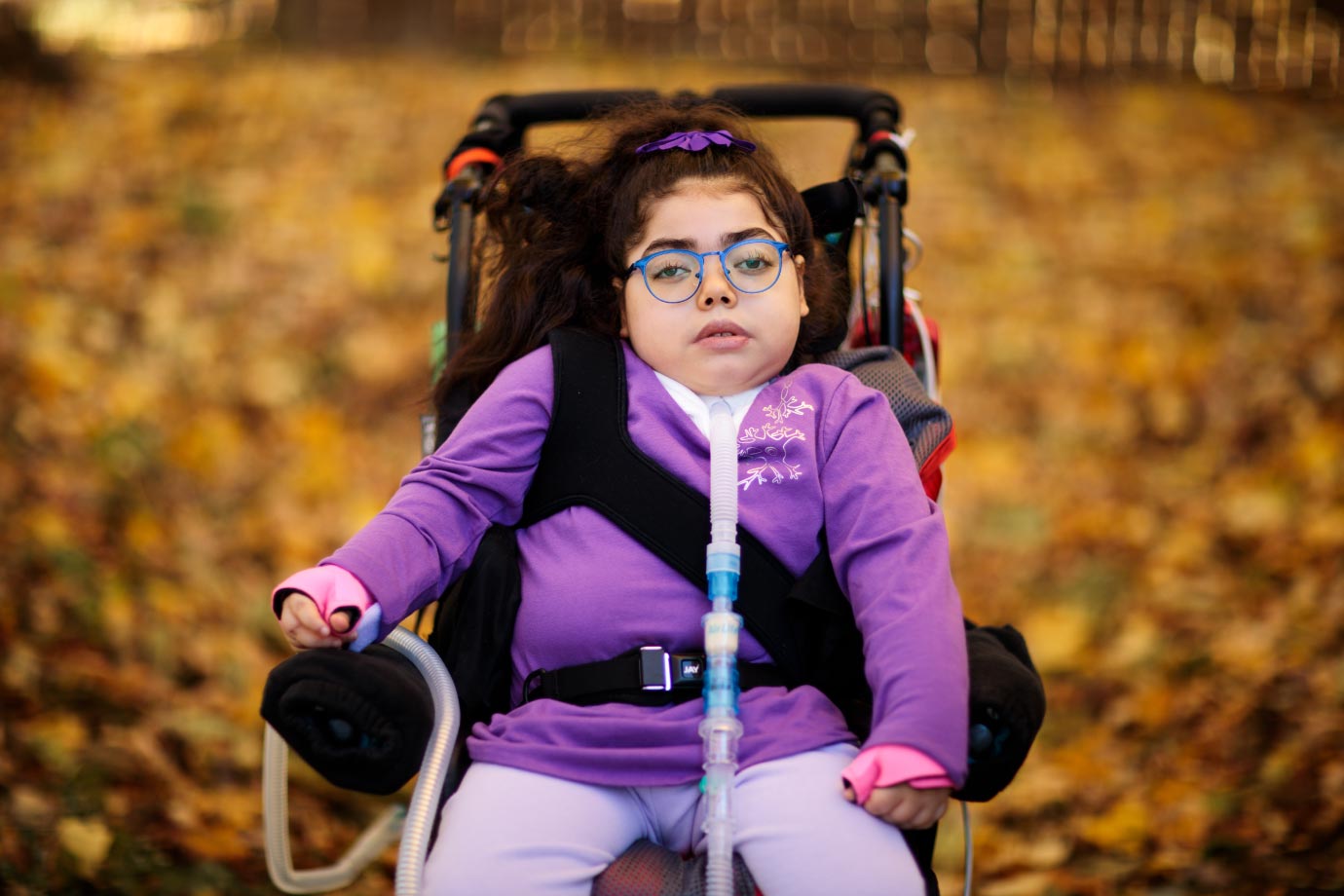
At the age of 40, Veronica decided she was ready to start a family and opted to be single mom of choice, using a donor. Becoming a mom was an easy decision. She had a well-established career in the accounting department at a Boston law firm, felt as prepared for parenthood as she could be, and in 2013, she welcomed her beautiful baby girl, Arianna.
Today, it’s hard to miss eight-year-old Arianna’s resemblance to her mother. Both have a full head of wavy brown hair. Then there’s the smile, big when it comes, and warm. In different circumstances Arianna would surely have Veronica’s welcoming energy and animated laugh. But Arianna isn’t able run to the door to greet guests with a wave and a hug. She can’t speak or walk, and she relies on her mother and her nurses for around-the-clock care. She is most often in her bedroom, which is a great room retrofitted to accommodate the multitude of life-saving machines and what seems like miles of wires and tubing.
“In my next life, I would be happy to never see another wire,” Veronica laughs as she maneuvers wires around the bed and equipment to prep Arianna’s wheelchair for a walk. We’re visiting their home for the day and Veronica assures us Arianna is loving the attention.
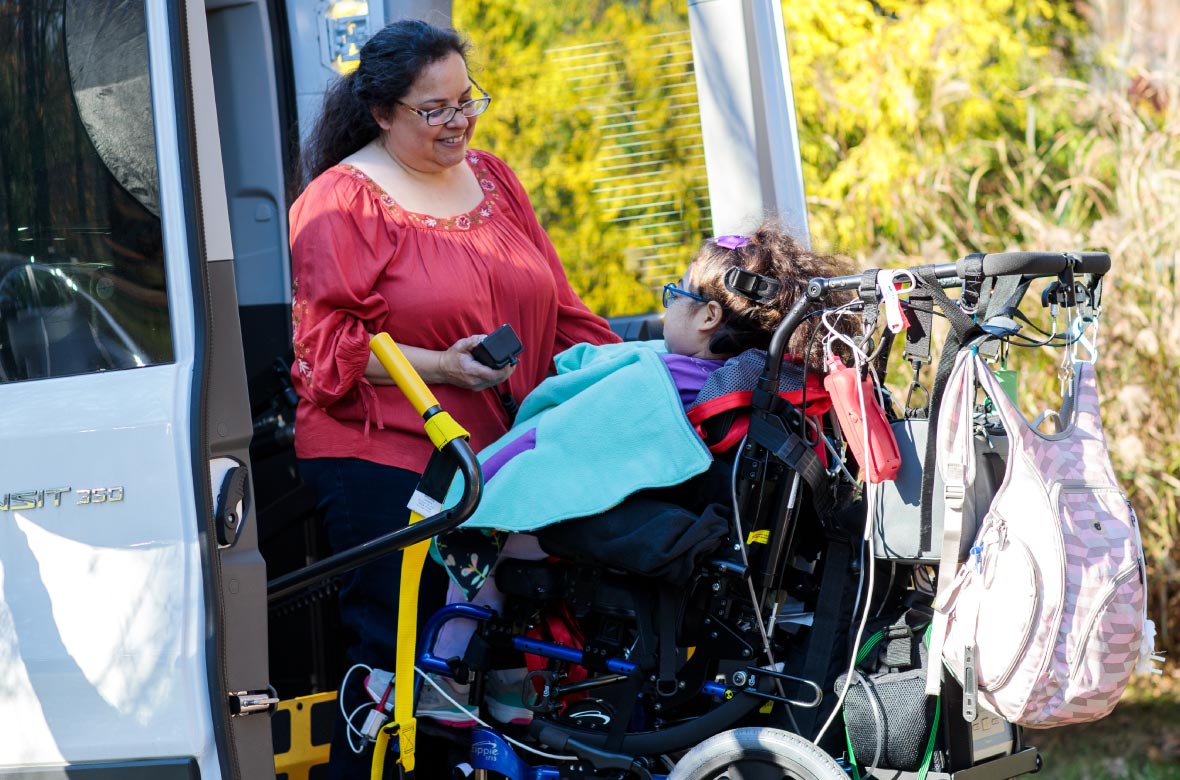
In my next life, I would be happy to never see another wire
Finding Answers and Dealing with Acute Issues
It wasn’t long after birth that Veronica noticed something different with her daughter. Arianna experienced an umbilical hernia within her first 10 days of her life. She made choking sounds when she hadn’t eaten. She had a hard time sleeping on her back, would sweat excessively, and would become agitated, inconsolable, and lose consciousness when trying to pass gas or empty her bowels.
Veronica knew something wasn’t right, and she started working with Arianna’s doctors to find answers. It took a few months before a pediatric geneticist delivered a neuronopathic Gaucher disease diagnosis. At that time, they couldn’t determine whether it was type 2 or type 3. She was six months old. It was not until after Arianna’s diagnosis that Veronica discovered she and her sperm donor both carried the rare genetic mutation that can lead to Gaucher disease.
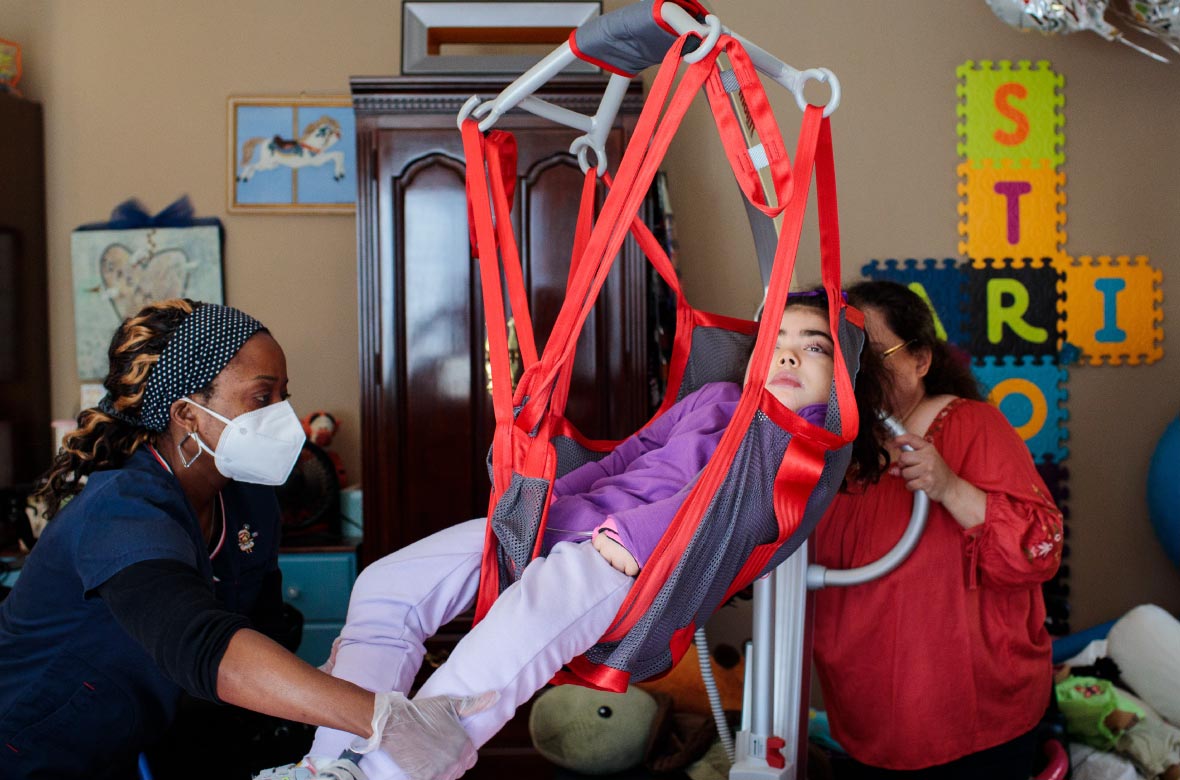
Veronica quickly shifted her focus to working with her medical team to keep Arianna alive. It took a few months to see a specialist who diagnosed Arianna with Gaucher disease type 3. She then started on a treatment at nine months. The medication improved her symptoms but didn’t fully stop her disease progression. At 20-months old, she started having seizures, now controlled by medication that must be continually adjusted for growth.
At seven months, Arianna needed help breathing and had a tracheostomy. At a year and a half, she needed the assistance of a ventilator. She is now considered ventilator-dependent although she can be off the ventilator for short periods of time. She also needs help eating and receives fluids, nutrition, and medication through a gastrostomy tube that goes directly to her stomach.
As Arianna continues to grow, and her disease progresses, her mother and medical team keep trying to find solutions and care options. At 6-years old, Arianna received growth rods to help control her scoliosis (curvature of the spine which impedes on the lungs) in the hopes she could be ventilator-free. Unfortunately, Arianna contracted MRSA, an antibiotic-resistant infection, and the rods had to be removed two months later. Their hope for greater independence was put on hold.
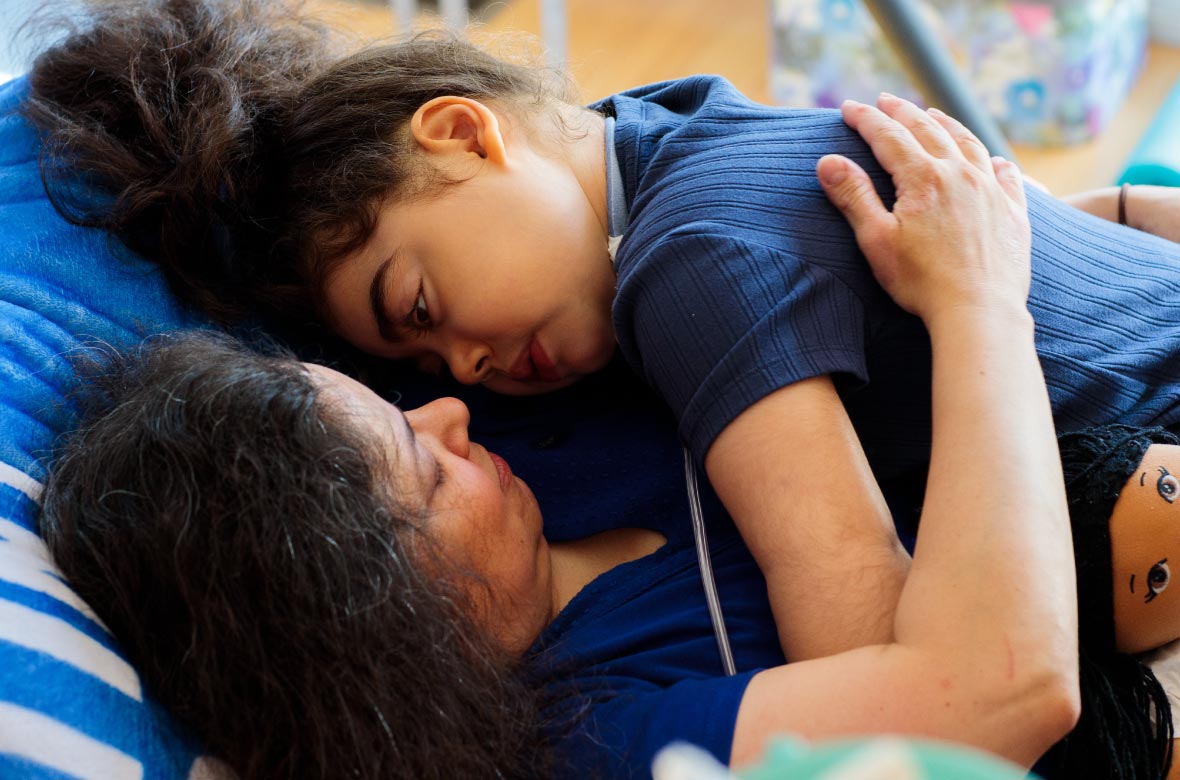
Managing Day-to-Day
Veronica has become a full-time caregiver, giving up her career after her maternity leave ended and dedicating almost every moment of her day to providing the best life for her daughter–even outfitting and reorganizing her home to accommodate all the equipment and medical supplies Arianna relies on. She makes it work through assistance programs, home health nurses, and support from friends and family. To prepare for guests today, one of Arianna’s former teachers offered to pick up and deliver a few new outfits for Veronica. “I haven’t felt like ‘a normal person’ in a long time,” Veronica says.
She continues to adjust to Arianna’s needs, navigating each new challenge and coordinating care across 24 specialists, which each require a minimum of two appointments a year – which can mean four or more appointments per month. The availability and coverage for telehealth visits due to COVID has been a welcome change and a new wheelchair-accessible van makes travel much easier. Days are filled by a litany of appointments with physical, occupational, and speech therapists. In between, Arianna attends school at home and is practicing eye-gaze technology to be able to communicate what she wants and needs. Veronica is excited to know what’s going on in her head, “I know that she wants to be better able to communicate with us.”
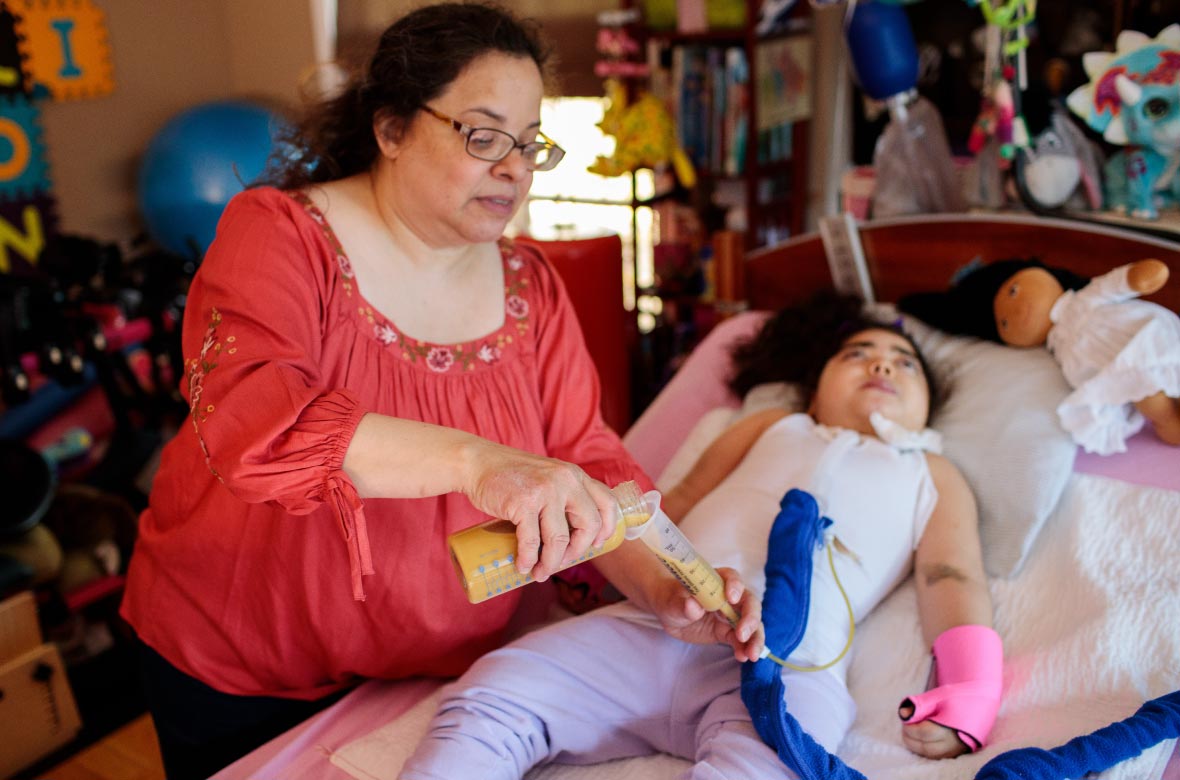
I know that she wants to be better able to communicate with us.
Arianna is now the size of a typical eight-year-old child, so Veronica can no longer lift her on her own. It pains her that on the days when she does not have nursing support, she can’t do as many activities with her daughter. Due to the coronavirus pandemic and limited nursing availability, she was only able to find coverage for 24 to 32 hours per week of the 160 hours she was allocated. The recent arrival of a battery-operated and portable lift was a game changer.
When she does have a nurse, or Arianna is spending time in her stander, Veronica eats when she can, prepares and administers medications for Arianna, orders critical medical supplies, speaks with doctors and pharmacies, and schedules and reschedules appointments.
As Arianna’s only caretaker, the mental, emotional, social, and physical toll is high. “Sometimes when I have a nurse, I’ll just jump in the van and take a drive. I’ll go up and down the road for 20 minutes, just to get out of the house and take a break.” She also keeps several sudoku puzzles around the house as a quick mental break.
Sometimes when I have a nurse, I’ll just jump in the van and take a drive. I’ll go up and down the road for 20 minutes, just to get out of the house and take a break.
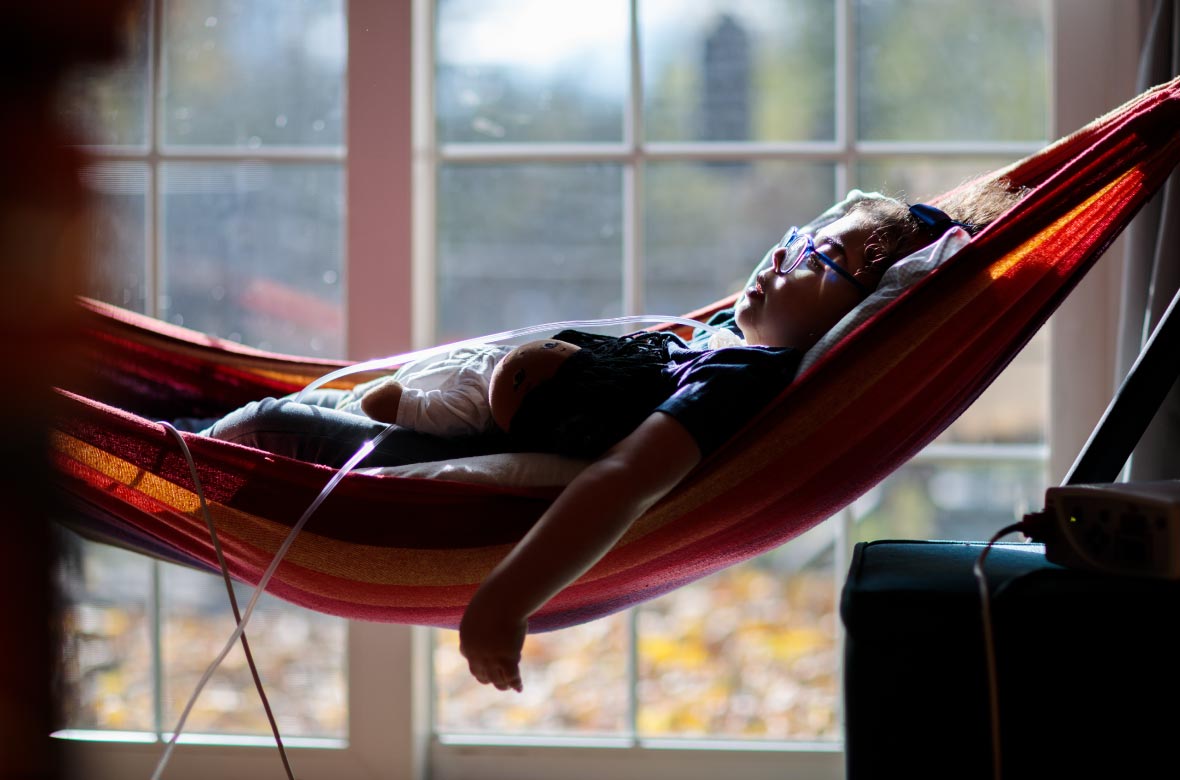
Finding Joy and Gratitude
Arianna’s smile beams when she’s having fun or her mom’s being silly. She enjoys meeting new people and misses the pre-COVID days when they were free to go out and see neighbors, go for a walk in the woods or see something different than a medical facility. “Arianna likes people. You just need to get close, so she knows you’re talking to her,” Veronica explains. On the day we’re visiting, Arianna smiled as the photographer snapped pictures.
She loves her hammock and enjoys the sunshine coming in from the large windows and sliding glass door. If the weather is nice, they will go for walks around their neighborhood in her wheelchair. They also spend time doing typical family activities; they read stories, play with puppets, and watch TV. Arianna loves her dolls, and her mom has decorated her room in vibrant colors and filled it with other stuffed pals to keep her company.
Veronica stresses the importance of community for support. “I’ve met some wonderful people through social media support groups. I try to share what I’ve learned and ask other parents for advice based on their experience. I share Arianna’s story because it makes me feel less alone, and to let other families experiencing this know that they are not alone.”
Veronica encourages anyone living with or caring for someone with a rare disease to connect with online support groups and gain strength from each other.
I share Arianna’s story because it makes me feel less alone, and to let other families experiencing this know that they are not alone.
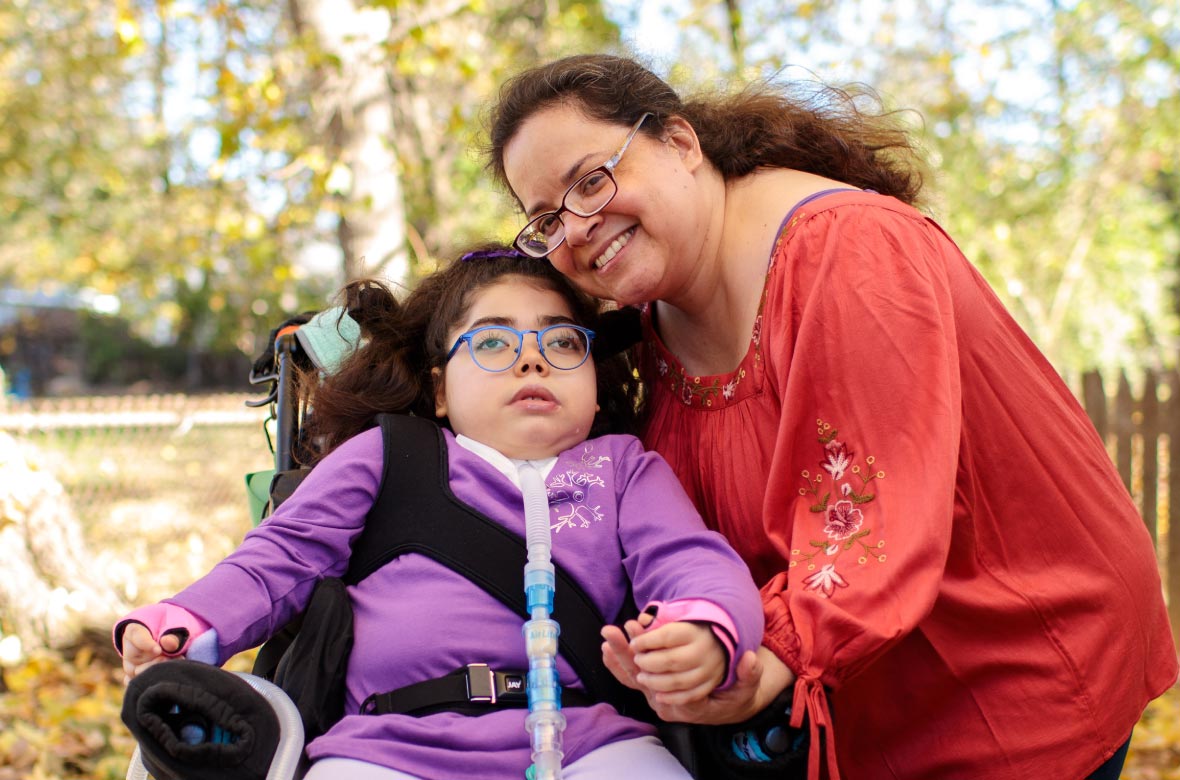
Looking to the future
Veronica hopes that Arianna will soon have the surgery that will straighten her spine, improve her mobility, and increase air flow to the lungs, reducing her need for a ventilator. Even though she’s hopeful, there’s a level of anxiety that comes with the uncertainty of the future. “Things can change, and we have to roll with it. This is Arianna’s world and we’re just living in it.”
In the meantime, Veronica works tirelessly every day to provide her daughter with the best quality of life possible – whatever that takes. Next to Arianna’s bed a large colorful collage of alphabet puzzle pieces spells out “Ari Strong” – a testament to the resilience of their family.
Things can change, and we have to roll with it. This is Arianna’s world and we’re just living in it.
AVROBIO